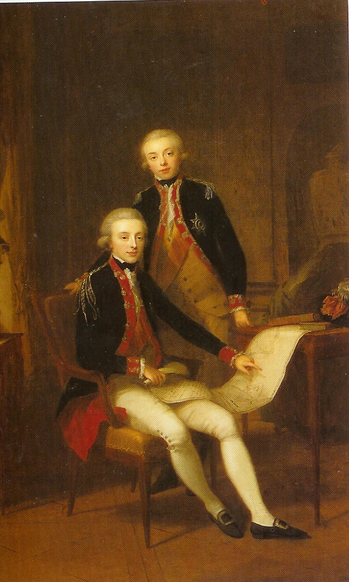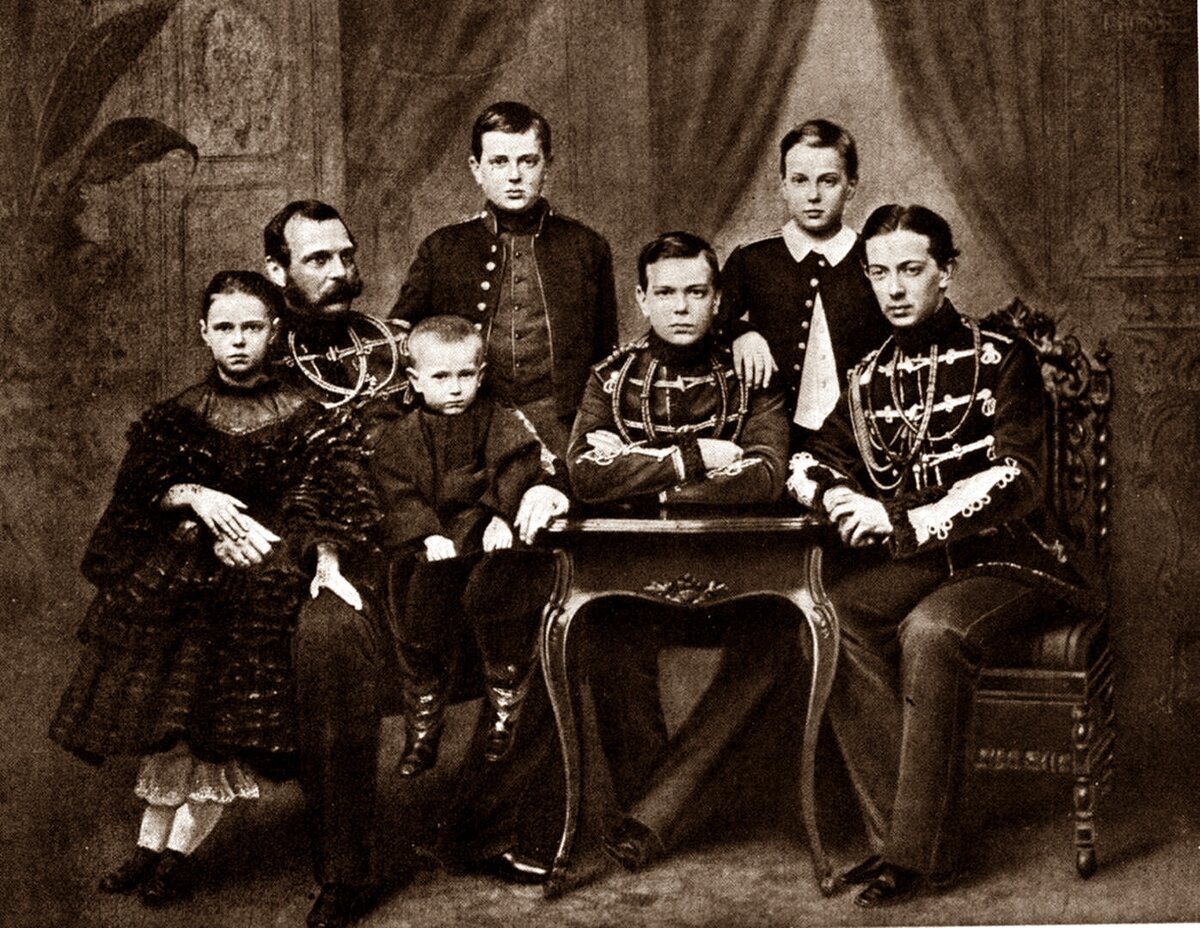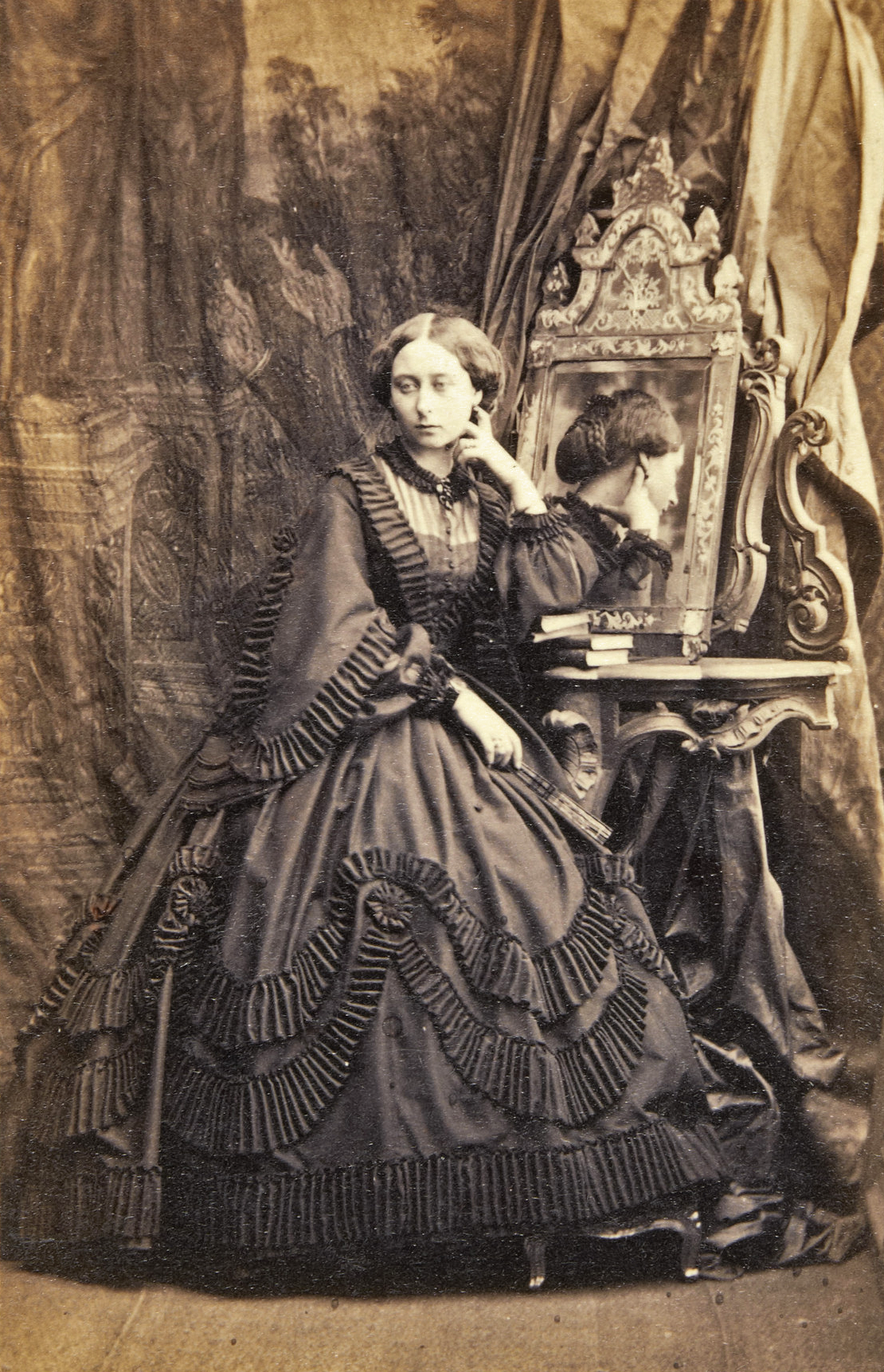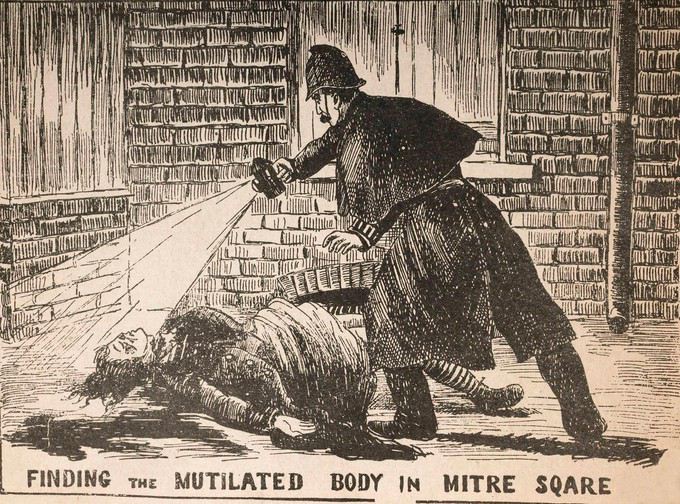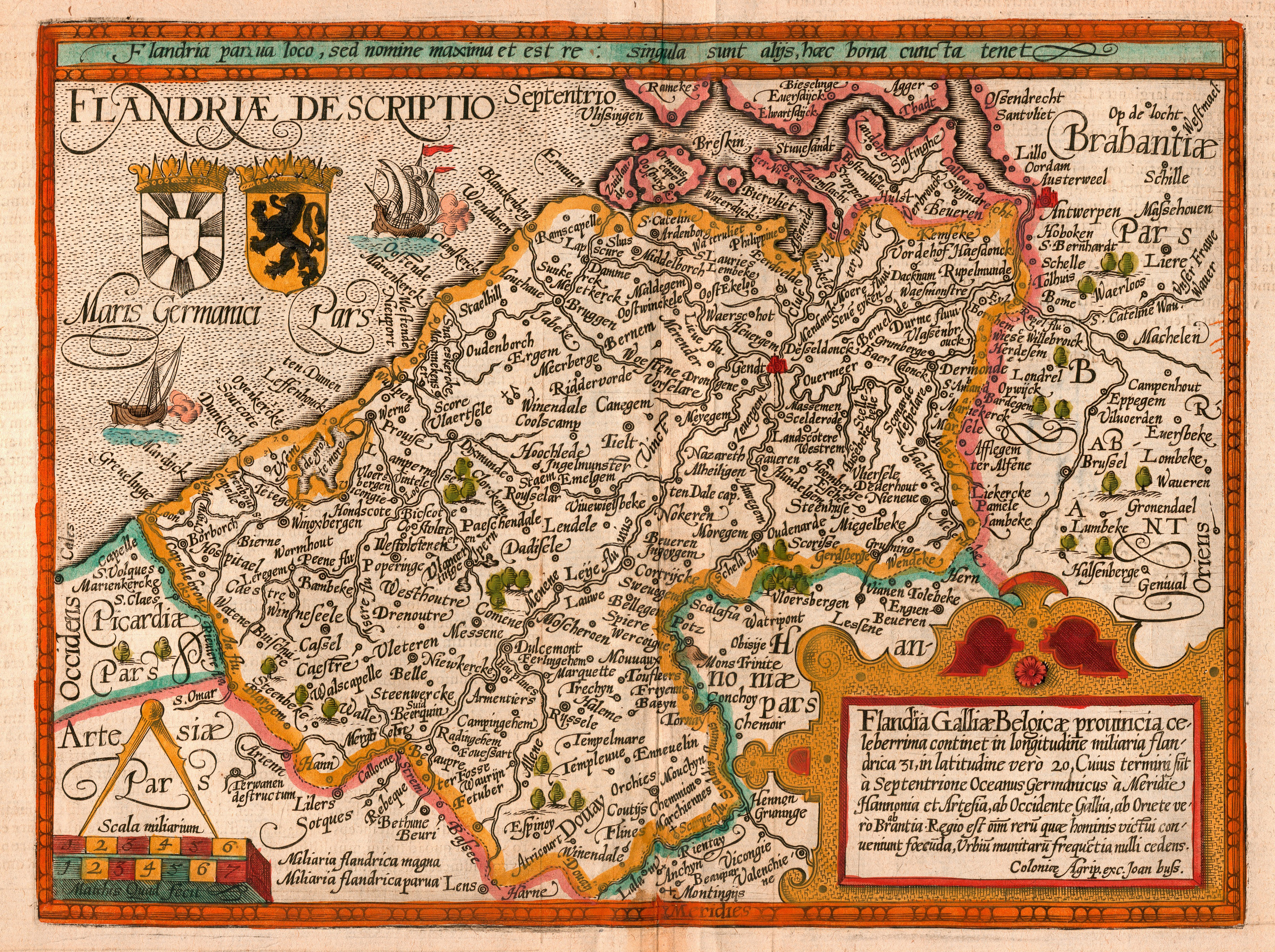|
William, Prince Of Orange
William, Prince of Orange (Willem Nicolaas Alexander Frederik Karel Hendrik; 4 September 1840 – 11 June 1879), was heir apparent to the Dutch throne as the eldest son of William III of the Netherlands, King William III from 17 March 1849 until his death. Early life Prince William was the eldest son of King William III of the Netherlands and his first wife, Princess Sophie of Württemberg. His nickname was ''Wiwill''. At his birth, he held the third position in the line of succession to the Dutch throne behind his grandfather and father. He was also seventeenth in the line of succession to the British throne, his claim being through his mother's great-grandmother Princess Augusta of Great Britain. On 7 October 1840, only a month after his birth, his great-grandfather, the reigning King William I of the Netherlands, abdicated the throne due to disappointment over the recent Treaty of London (1839), Treaty of London, which recognized the independence of Belgium (previously provin ... [...More Info...] [...Related Items...] OR: [Wikipedia] [Google] [Baidu] |
William Of Orange (other)
William of Orange usually refers to either: *William the Silent, William I, (1533–1584), Prince of Orange, leader of the Dutch Revolt, founder of the House Orange-Nassau and the United Provinces as a state *William III of England, William III of Orange-Nassau, William II of Scotland, (1650–1702) stadtholder of the Dutch Republic William of Orange may also refer to: Middle Ages * Saint William of Gellone (755 – c. 812), courtier of Charlemagne who defeated the Saracens at Orange * William (Bishop of Orange) (d. 1098), a Bishop who joined the First Crusade William of Orange in the House of Baux and the House of Chalon-Arlay * William I of Baux (c. 1155 – 1219) * William II of Baux (died 1239) * William III of Baux (died 1256) * William VII of Chalon-Arlay (c. 1415 – 1478) United Provinces of the Netherlands * William II, Prince of Orange (1626–1650), stadtholder of the United Provinces of the Netherlands from 1647 * William IV, Prince of Orange (1711–1751), first her ... [...More Info...] [...Related Items...] OR: [Wikipedia] [Google] [Baidu] |
William I Of The Netherlands
William I (Willem Frederik; 24 August 1772 – 12 December 1843) was King of the Netherlands and List of monarchs of Luxembourg, Grand Duke of Luxembourg from 1815 until his abdication in 1840. Born as the son of William V, Prince of Orange, the last stadtholder of the Dutch Republic, and Wilhelmina of Prussia, Princess of Orange, Wilhelmina of Prussia, William experienced significant political upheavals early in life. He fought against the French invasion during the Low Countries theatre of the War of the First Coalition, Flanders campaign, and after the Batavian Revolution in 1795, his family went into exile. He briefly ruled the Principality of Nassau-Orange-Fulda before Napoleon's French troops' occupation forced him out of power. Following the defeat of Napoleon in 1814, William was invited back to the Netherlands, where he proclaimed himself Sovereign Prince of the United Netherlands. In 1815, William raised the Netherlands to a kingdom and concurrently became the gran ... [...More Info...] [...Related Items...] OR: [Wikipedia] [Google] [Baidu] |
Limburg-Stirum
The House of Limburg-Stirum (or Limburg-Styrum), which adopted its name in the 12th century from the immediate county of Limburg an der Lenne in what is now Germany, is one of the oldest families in Europe. It is the eldest and only surviving branch of the House of Berg, which was among the most powerful dynasties in the region of the lower Rhine during the Middle Ages. Some historians link them to an even older dynasty, the Ezzonen, going back to the 9th century. The Limburg-Stirum were imperial counts within the Holy Roman Empire, until they were mediatised in 1806 by the Confederation of the Rhine. Although undisputedly a mediatised comital family, having enjoyed a dynastic status for over 600 years until the collapse of the Empire, they were omitted from the ''Almanach de Gotha'' because the branches of the family possessing mediatised lands were extinct by the time (1815) that the Congress of Vienna established the German Confederation's obligation to recognise their ... [...More Info...] [...Related Items...] OR: [Wikipedia] [Google] [Baidu] |
Grand Duchess Maria Alexandrovna Of Russia
Grand Duchess Maria Alexandrovna of Russia (; – 22 October 1920) was the sixth child and only surviving daughter of Alexander II of Russia and Marie of Hesse and by Rhine; she was Duchess of Edinburgh and later Duchess of Saxe-Coburg and Gotha as the wife of Alfred, Duke of Saxe-Coburg and Gotha. She was the younger sister of Alexander III of Russia and the paternal aunt of Russia's last emperor, Nicholas II. In 1874, Maria married Prince Alfred, Duke of Edinburgh, the second son of Queen Victoria and Prince Albert of Saxe-Coburg and Gotha; she was the only Romanov to marry into the British royal family. The couple had five children: Alfred, Marie, Victoria Melita, Alexandra, and Beatrice. For the first years of her marriage, Maria lived in England. She neither adapted to the British court nor overcame her dislike for her adopted country. She accompanied her husband on his postings as an admiral of the Royal Navy at Malta (1886–1889) and Devonport (1890–1893). Th ... [...More Info...] [...Related Items...] OR: [Wikipedia] [Google] [Baidu] |
Queen Victoria
Victoria (Alexandrina Victoria; 24 May 1819 – 22 January 1901) was Queen of the United Kingdom of Great Britain and Ireland from 20 June 1837 until Death and state funeral of Queen Victoria, her death in January 1901. Her reign of 63 years and 216 days, which was List of monarchs in Britain by length of reign, longer than those of any of her predecessors, constituted the Victorian era. It was a period of industrial, political, scientific, and military change within the United Kingdom of Great Britain and Ireland, United Kingdom, and was marked by a great expansion of the British Empire. In 1876, the British parliament voted to grant her the additional title of Empress of India. Victoria was the daughter of Prince Edward, Duke of Kent and Strathearn (the fourth son of King George III), and Princess Victoria of Saxe-Coburg-Saalfeld. After the deaths of her father and grandfather in 1820, she was Kensington System, raised under close supervision by her mother and her Comptrol ... [...More Info...] [...Related Items...] OR: [Wikipedia] [Google] [Baidu] |
Princess Alice Of The United Kingdom
Princess Alice (Alice Maud Mary; 25 April 1843 – 14 December 1878) was Grand Duchess of Hesse and by Rhine from 13 June 1877 until her death in 1878 as the wife of Grand Duke Louis IV. She was the third child and second daughter of Queen Victoria of the United Kingdom and Prince Albert of Saxe-Coburg and Gotha. Alice was the first of Queen Victoria's nine children to die, and one of three to predecease their mother, who died in 1901. Her life had been enwrapped in tragedy since her father's death in 1861. Alice spent her early childhood in the company of her parents and siblings, travelling between the British royal residences. Her education was devised by Prince Albert's close friend and adviser, Christian Friedrich, Baron Stockmar, and included practical activities such as needlework and woodwork and languages such as French and German. When her father became fatally ill in December 1861, Alice nursed him until his death. Following his death, Queen Victoria entered a ... [...More Info...] [...Related Items...] OR: [Wikipedia] [Google] [Baidu] |
Victorian Morality
Victorian morality is a distillation of the moral views of the middle class in 19th-century Britain, the Victorian era. Victorian values emerged in all social classes and reached all facets of Victorian living. The values of the period—which can be classed as religion, morality, Evangelicalism, industrial work ethic, and personal improvement—took root in Victorian morality. Contemporary plays and all literature—including old classics, like William Shakespeare's works—were cleansed of content considered to be inappropriate for children, or " bowdlerized". Historians have generally come to regard the Victorian era as a time of many conflicts, such as the widespread cultivation of an outward appearance of dignity and restraint, together with serious debates about exactly how the new morality should be implemented. The international slave trade was abolished, and this ban was enforced by the Royal Navy. Slavery was ended in all the British colonies, child labour was ended ... [...More Info...] [...Related Items...] OR: [Wikipedia] [Google] [Baidu] |
William II Of The Netherlands
William II (; English: William Frederick George Louis; 6 December 1792 – 17 March 1849), known as Koning Willem de Tweede or Koning Willem II in the Netherlands, was King of the Netherlands, Grand Duke of Luxembourg, and Duke of Limburg. William II was the son of William I and Wilhelmine of Prussia. When his father, who up to that time ruled as sovereign prince, proclaimed himself king in 1815, he became Prince of Orange as heir apparent of the United Kingdom of the Netherlands. With the abdication of his father on 7 October 1840, William II became king. During his reign, the Netherlands became a parliamentary democracy with the new constitution of 1848. William II was married to Anna Pavlovna of Russia. They had four sons and one daughter. William II was succeeded by his son William III. Early life and education Willem Frederik George Lodewijk was born on 6 December 1792 in The Hague. He was the eldest son of the then Prince William and Wilhelmine of Prussia. His mat ... [...More Info...] [...Related Items...] OR: [Wikipedia] [Google] [Baidu] |
Henrietta D'Oultremont
Countess Henriëtte Adriana Maria Ludovica Flora d'Oultremont de Wégimont (28 February 1792 in Maastricht–26 October 1864 at Rahe Castle in Aachen) was the second, morganatic, wife of the first Dutch king, William I. Being the morganatic wife of the King, she was never made Queen Consort. Life Henriëtte d'Oultremont was one of five children of Count Ferdinand d'Oultremont de Wégimont (1760-1799) from Liège and his wife, Johanna Susanna Hartsinck (1759-1830), daughter of Admiral Andries Hartsinck (1720-1788) and Johanna Cornelia de Bas (1721-1787). She was related to Count Charles Jean "John" d'Oultremont (1848-1917). Around 1840, King William found himself in discord with much of the Dutch population due to his refusal to implement demanded reforms. This discord was enhanced when the king, head of the strictly Protestant and royal House of Orange-Nassau, announced his intention to marry the Catholic Countess Henriëtte, who had been a lady-in-waiting to his first ... [...More Info...] [...Related Items...] OR: [Wikipedia] [Google] [Baidu] |
Belgians
Belgians ( ; ; ) are people identified with the Kingdom of Belgium, a federal state in Western Europe. As Belgium is a multinational state, this connection may be residential, legal, historical, or cultural rather than ethnic. The majority of Belgians, however, belong to two distinct linguistic groups or ''communities'' (; ) native to the country, i.e. its historical regions: Flemings in Flanders, who speak Dutch, West Flemish and Limburgish; and Walloons in Wallonia, who speak French or Walloon. There is also a substantial Belgian diaspora, which has settled primarily in the United States, Canada, France, and the Netherlands. Etymology The 1830 revolution led to the establishment of an independent country under a provisional government and a national congress. The name "Belgium" was adopted for the country, the word being derived from '' Gallia Belgica'', a Roman province in the northernmost part of Gaul that, before Roman invasion in 100 BC, was inhabi ... [...More Info...] [...Related Items...] OR: [Wikipedia] [Google] [Baidu] |
Roman Catholic Church
The Catholic Church (), also known as the Roman Catholic Church, is the List of Christian denominations by number of members, largest Christian church, with 1.27 to 1.41 billion baptized Catholics Catholic Church by country, worldwide as of 2025. It is among the world's oldest and largest international institutions and has played a prominent role in the history and development of Western civilization.Gerald O'Collins, O'Collins, p. v (preface). The church consists of 24 Catholic particular churches and liturgical rites#Churches, ''sui iuris'' (autonomous) churches, including the Latin Church and 23 Eastern Catholic Churches, which comprise almost 3,500 dioceses and Eparchy, eparchies List of Catholic dioceses (structured view), around the world, each overseen by one or more Bishops in the Catholic Church, bishops. The pope, who is the bishop of Rome, is the Papal supremacy, chief pastor of the church. The core beliefs of Catholicism are found in the Nicene Creed. The ... [...More Info...] [...Related Items...] OR: [Wikipedia] [Google] [Baidu] |

